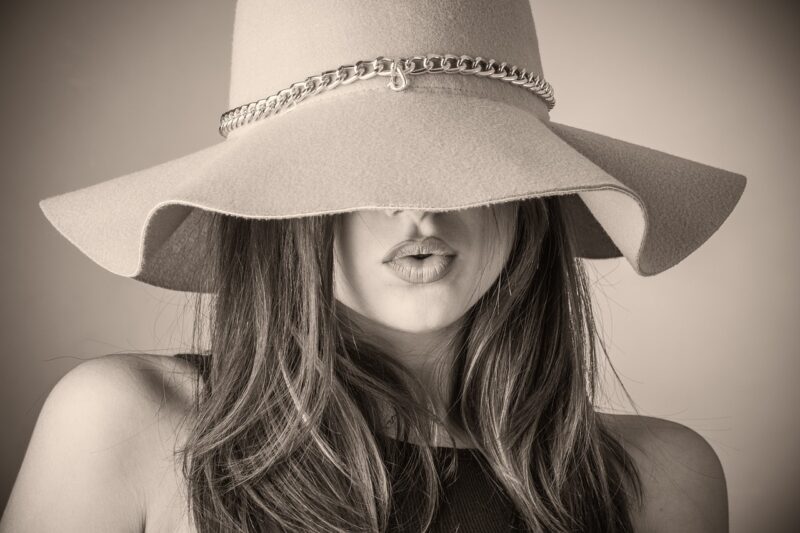
Fashion is a constantly evolving language, a reflection of the time and culture in which we live. Throughout history, different eras have given rise to peculiar and often perplexing fashion trends that have left an indelible mark on society. This article explores some of the most bizarre fashion trends that have emerged over the decades—showcasing how creativity and absurdity can coexist in the world of style.
1. The 1920s: Flapper Dresses and Men’s Suits
The 1920s, often called the Roaring Twenties, was a decade of liberation and exuberance. Women liberated from the constraints of the past embraced the flapper dress—characterized by its dropped waist and loose fit. Flappers were seen as the embodiment of modern femininity, sipping cocktails and dancing the Charleston. Meanwhile, men sported suits with bold patterns and accessories like fedoras and pocket squares, setting a distinct style that remains iconic today.
Unfortunately, the 1920s also saw the rise of bizarre trends like the ‘vamp’ look—where women would wear dark makeup, exaggerated lips, and even sport fake teeth to mimic the look of vampires. These trends expressed women’s newfound freedom while also reflecting the secrecy of the decade’s speakeasies and nightlife.
2. The 1950s: Poodle Skirts and the Rockabilly Look
The 1950s brought a wave of nostalgia with its signature poodle skirts—knee-length felt skirts embroidered with cute poodle designs. These skirts became the ultimate symbol of teenage rebellion and girlhood, often worn with a fitted top, bobby socks, and saddle shoes. Concurrently, men leaned into the Rockabilly fashion with leather jackets, greaser hairstyles, and jeans, influenced largely by icons like Elvis Presley.
However, one must not forget the absurd trends of the 1950s, such as the “Dinner Jacket” designed to be worn solely for eating dinner! This formal garment often included detachable sleeves and had a bizarre appeal that left many scratching their heads.
3. The 1960s: Psychedelic Prints and Go-Go Boots
The 1960s were notably colorful, fueled by the counterculture movement. The introduction of synthetic fabrics paved the way for psychedelic prints and vibrant colors that defined this era. Women embraced short hemlines and go-go boots, showcasing their legs in an empowering manner. Men experimented with mod fashion featuring tailored suits, skinny ties, and even floral shirts.
Yet, amidst the vibrant styles came the notorious “Necklace Pants” which consisted of pants made of chains or necklaces—a bizarre yet daring fashion statement worn by radical fashionistas.
4. The 1970s: Disco Fever and Platform Shoes
The disco era of the 1970s was marked by flamboyance. People embraced denim and boldly colored outfits, often accessorized with platform shoes that added height and flair to any ensemble. Disco balls reflected the funky energy of the time, while styles such as bell-bottom pants and jumpsuits became immensely popular.
Amidst all this, the 1970s also witnessed the rise of the “Jumpsuit” worn by both men and women, which sometimes became impractical due to complex zippers and fastenings—leading to many humorous incidents on the dancefloor.
5. The 1980s: Bold Colors and Neon Madness
As the world entered the 1980s, fashion took a radical turn with bold colors, oversized silhouettes, and lots of accessories. People adorned themselves in neon-colored outfits, shoulder pads, and leg warmers—eventually leading to the unforgettable aerobics fashion craze.
While it was all about excess, the 1980s brought us “Shoulder Pad Suits”—a trend paradoxically aimed at empowering women in the workplace. However, one of the most eye-catching bizarre items was the “Pantsuit in Animal Print,” where career-oriented women sought attention in prints like leopard or zebra—making a loud statement long before animal rights became a movement.
6. The 1990s: Grunge and Excessive Layering
The 1990s were synonymous with grunge, a fashion style depicted by oversized flannel shirts, ripped jeans, and combat boots epitomized by Nirvana and Pearl Jam. Simplicity and a defiance of mainstream fashion characterized this decade.
However, along with grunge, the 1990s bore witness to the puzzling ‘Crop Top’ and ‘High-Waisted Jeans’ combo—an unlikely partner that left many in fashion confusion. And let’s not forget the “Choker Necklaces” which became a must-have jewelry item that a lot of us are still trying to comprehend.
7. The 2000s: Low-Rise Jeans and Trucker Hats
Entering the new millennium, fashion trends took a more casual turn with low-rise jeans, brightly colored trucker hats, and lots of denim layering. Stars like Britney Spears and Justin Timberlake influenced these bizarre outfits that often left an imprint on pop culture.
While this decade had many iconic moments, perhaps the most ridiculous trend was the “Visible Thong,” where low-rise jeans sat so low that underwear became a visible accessory, often inviting raised eyebrows from the fashion police.
8. The 2010s: Normcore and Gender Fluidity
Fast forward to the 2010s, where the concept of Normcore emerged—an anti-fashion trend deeply rooted in self-parody. Items like dad jeans, oversized sweatshirts, and sneakers became fashionable choices—as if striving for mediocrity.
2020 also experienced the rise of gender-neutral trends and fluidity in fashion where traditional gender divisions blurred. From peplum tops to skirts for men, the traditional lines of menswear and womenswear were thoroughly challenged.
Lastly, the “Ugly Sweater” had its moment, where people willingly sported deliberately unattractive sweaters to holiday parties, embracing comedy in fashion.
Conclusion
Fashion serves as a canvas where creativity often meets absurdity. Through decades, we’ve seen an engaging dialogue between cultural shifts and the peculiar trends that arise from them. Whether it’s the bouncy poodle skirts of the 50s or the apparent chaos of the 80s, what remains interesting is how peculiar fashion can tell a story about society and its enduring quest for identity.
By understanding the evolution of these bizarre fashion trends, we can appreciate the layers of history and the fabric of modern culture, paving the way for future generations to explore their unique expressions through style and creativity.






